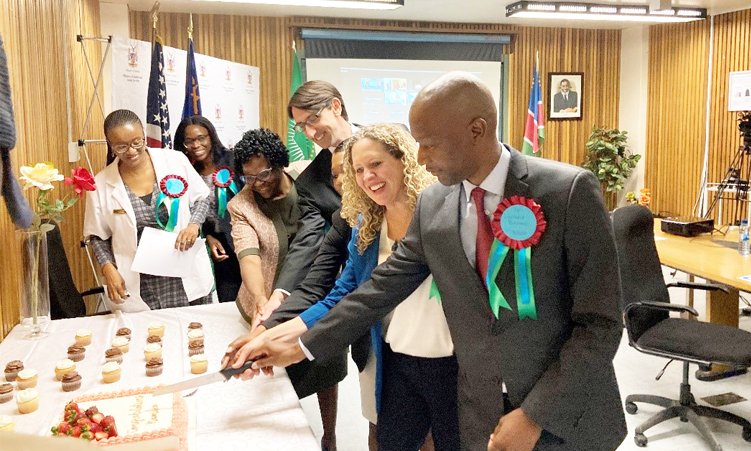JOHN* plays quietly on the floor as his caregiver looks on proudly. Healthy and growing, John is the perfect example of a thriving three-year-old.
However, this was not always the case.
John was infected with HIV at birth, and despite being put on the HIV treatment available at the time, the virus was not suppressed in his body.
“Every time we visited the clinic for a check-up, I would cry,” his caregiver says.
“I was giving him his medicine, but it wasn’t working. I didn’t know what I was doing wrong.”
Some of the older HIV medicine are less pleasant and less effective than newer medicine.
John’s caregiver’s testimony is a reminder of the pain parents and caregivers experience when, despite doing their best, they cannot keep their children healthy.
Fortunately, in July 2021, the Ministry of Health and Social Services introduced new HIV medicine for young children.
The medicine contains dolutegravir (also known as DTG), which studies show is more effective at treating HIV, less likely to cause side effects, easier to take, and better tasting.
“The effect was almost instantaneous,” says John’s caregiver. “By taking this medicine, John quickly got the virus under control. Now when I visit the clinic, I am singing and dancing.”
John’s success story is one of over 11 700 across Namibia.
In just one year, the ministry has ensured that all eligible HIV-positive children and adolescents in the country have access to this medicine.
The introduction of this new medicine to Namibia has been achieved through a collaborative effort between the health ministry and partners such as the United States (US) Centres for Disease Control and Prevention (CDC) and the United States Agency for International Development (USAID), through funding from the US President’s Emergency Plan for AIDS Relief (Pepfar).
The US government has partnered with the health ministry throughout the entire process.
“Providing DTG-based medicines for children and adolescents living with HIV is life-changing,” says CDC Namibia country director Brian Baker.
Collaborative goals between the health ministry and the US government to strengthen HIV care and treatment for children and adolescents this year include training more healthcare providers on how to explain to children why they take medicine and how important it is to take each day, continued support for older HIV-positive adolescents to take a leadership role to support other HIV-positive children and adolescents, and starting support groups for parents and caregivers of children and adolescents living with HIV.
“When we optimise children’s treatment regimen during childhood, we help to set up the next generation of adults, leaders, parents, friends and family for the best possible success,” Baker says.
*Not his real name
– Produced by the United States embassy
Stay informed with The Namibian – your source for credible journalism. Get in-depth reporting and opinions for
only N$85 a month. Invest in journalism, invest in democracy –
Subscribe Now!






